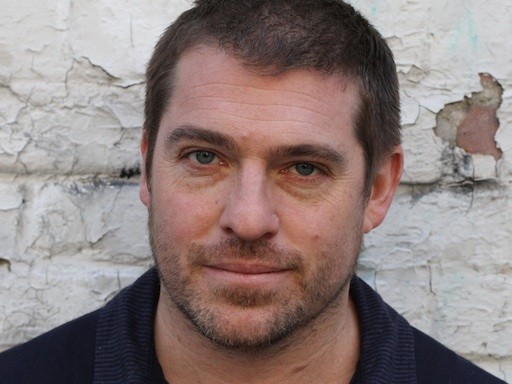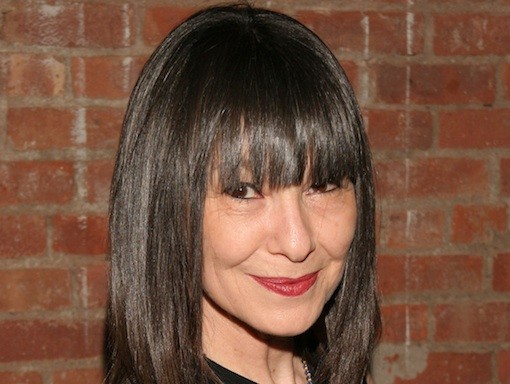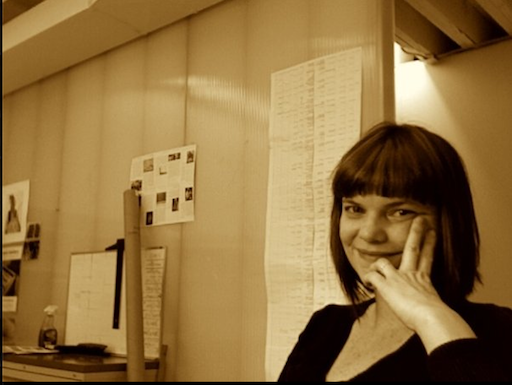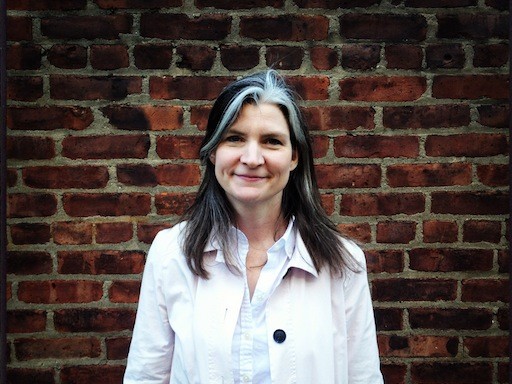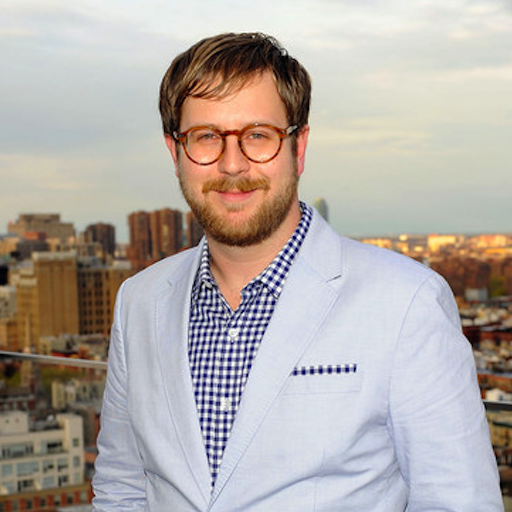As the curator of Creative Time, Nato Thompson has worked with a staggering number of today's most important political artists, from commissioning high-profile public art projects to bringing together socially engaged artists and collectives for his annual Creative Time Summit. As the author of Living as Form: Socially Engaged Art From 1991-2011, he is also an expert in the history of this most attention-grabbing breed of art. To find out how collectors can approach political art, Artspace editor-in-chief Andrew M. Goldstein sat down with Thompson to discuss how to live with the powerful work—and learn what he considers the most important developments in the field today.
How would you define political art?
You started with the most complicated question [laughs]. I believe that when a work of art or anything else makes you feel something, it makes you feel something for a reason, and the reasons behind those feelings are often political. That's what I think art does-generate that emotion, that affect. Often art and politics are put in some bizarre dichotomy, but I don't think it's like that. I tend to like art that matters to people's lives, and I believe that some contemporary art had been damaged by a desire to remove itself from things that matter in everyday life. I consider that to be a conservative kind of a disappearance from the world, and often it enters a realm that leaves me somewhat cold—that just doesn't move me in any way. But I'm not interested in political art that leaves people cold either. I'm interested in something that triggers you emotionally and that you can actually translate into the world around you—that has political implications.
When you say that art that affects the viewer often has a political dimension to it, what do you mean?
It's interesting because it's such a semiotic game we play. When people hear the word "politics" they think of governments, Democrats, Republicans—they think of a structure of politics. That's not how I think of the political, which tends to be a very unstructured, open-ended way of thinking about power and about the complications that occur when people who all have different opinions come together. To me that's the best instance of democracy, I guess.
That's interesting, considering how the word political stems from the Greek word "polis," which means exactly what you're saying: a group of citizens living together.
It's a common mistake to believe that the polis is some sort of unified, agreeable thing. There are vast dissents, there's disagreement, debate. With public art, for instance, great art produces a thousand opinions as opposed to a unified response. I think it's so boring when people uniformly say, "It was wonderful!" I like it when a million different opinions are brought to bear in one particular moment.
What would you tell someone who was interested in beginning to collect political artworks?
There are many people who collect art that is political, and there are politically engaged artists—though not all—who make work that is collectable. I used to say, "Don't do that. Your work has to be ephemeral and non-commodifiable." But I realize artists have to make a living, and there's no problem with that. So there's plenty of collectable political art out there, especially from the graphic perspective. There's straight-up graphic political stuff by artists from Raymond Pettibon to Leon Golub. Then you have sculptural installation kind of political artists, like Thomas Hirschhorn and Félix González-Torres, and photorealist, photo-commentary artists like David Wojnarowicz. There's so much of it, and it has a rich history. It's global, too. New York's no longer the only art center of the commercial sphere, and not all places are adverse to political art—a lot of artists are concerned with political issues. Collecting political art is a great way to explore the world and explore the most important issues of the time in the world. It's also a great way to know what was happening during a moment in history. Feminist art, for instance, is really of its period and it beautifully projects the tensions, considerations, feelings, emotions that were really pent up in a lot of people at the time.
When you see a work of political art in someone's home, sometimes it can be graphic and subtly powerful and sometimes it can be very attention-grabbing—like the collector is taking a stance. It can certainly get people talking.
Right. There's a big difference between the kind of art you want to put in your house and the kind of art that is meant to be shown in a place to think things through, like a museum. Sometimes it's really great art that you want to live with, and sometimes you don't want to look at political artwork before you go to sleep. There's just a difference, and I think that's okay. But collectors know this. Are you trying to decorate your house or are you trying to invest in some of the most interesting stuff happening in the world? These can be totally different questions.
Who are some of the artists who have had the biggest impact in the past 50 years on how politics are tackled in art?
I can't be too comprehensive, but I want to mention Judy Chicago, Alfredo Jaar, Krzysztof Wodiczko, Gordon Matta-Clark, Martha Rosler, Lygia Clark, Joseph Beuys, and Hans Haacke as artists whose work has been very informative. Actually, Warhol, too, in a kind of amazing way. People don't think of Warhol as political because he was interested in fame and glory, and that's all true, but he pointed at a brewing crisis in society with his art and said, "That thing, that spectacle over there, it is everything." Everyone else just said, "That's so interesting," and the crisis he pointed at never went away. Then there are the collectives and people questioning authorship, questioning the art market, like Group Material, Guerrilla Girls, Political Art Documentation/Distribution. I've always loved the collectives that refuse to make people famous—that refuse the entire system of the genius in preference for a kind of distributed authorship or agency. I hold up Group Material as a phenomenal collective. And there's a group in Chicago called Temporary Services, that's much more recent, that's deeply influential in my own practice.
In addition to the many artists who make politically engaged artworks, there are many artist-activists whose contributions do include works that can be readily purchased on the market, like Pussy Riot for instance. How can collectors support their projects?
It's interesting that you say that because it is related to money and opportunities, and what I mean by that is if you look at the different funding structures across the globe, those structures are related to the aesthetics produced in the country. You look at a place like Holland, which has an enormous state arts budget for a country of its scale, and because the government would just pay money for people to be artists, artists didn't feel as obligated to make objects because they weren't on the hook to do it. You found a lot more performance-based, not-object-based practices—socially engaged, social-justice art—because they didn't have to worry at the end of the day how they were going to pay the bills. It seems to me that the idea of benefactors for socially engaged political work would be a great idea in the United States, or worldwide. People might be worried that artists are going say, "I won't take your money." Well, a starving artist is willing to get paid to do what they love. And I think supporting political art is really important because there just aren't a lot of opportunities for artists to do that in this country. The option for most political artists is to hopefully get a teaching gig where they have to do adjunct work where they get paid like crap. The worst jobs in the world are those adjunct jobs—they don't turn into teaching jobs, and it's just mired-down, poorly paid slave labor. So I think supporting those kinds of practices, or funding a space, could be incredibly effective. Because as big as the United States is, there are only a few spaces that are wonderful political-art incubators, and they're struggling to make ends meet even though they generate so much culture.
Politics come in many shades, from gender politics to electoral politics to a whole slew of anti-establishment positions. How do you gauge the efficacy of this kind of work?
Efficacy is very difficult to measure. Creative Time is not some massive board foundation with tons of metrics and anthropologists gathered around to collect the data of what happens after we do a project. But I think some things are very important to get out into the world. And I'm very suspicious of art that is too self-referential. Art about art, or art where you need to read the codes within the art to understand it, is an insider's club. I like it when it speaks a language that's public enough that a lot of different people can enter into the thought process. I think a great work graduates from an extreme complexity to an extreme simplicity, like a good poem. It can be exceedingly subtle and complex but also provides a broad point of entry for people. That for me is a metric of success—when you can see something that appeals to a fussy, intellectual crowd and at the same time to a populist crowd that doesn't necessarily spend all of their time in the art world. At Creative Time we've worked on a lot of projects that do that.
So good political art works in the same way as a successful politician, crunching down a complex policy idea and broadcasting it to a broad audience?
In a way. But reaching a broad audience is easier said than done. A lot of people read that as dumbing stuff down, but I don't believe that. I actually think it's extremely difficult to make something that reaches both audiences. But I think it's important to remember that we live in a hyper-mediated culture, as you know, with a lot of different people reporting on different things, and we increasing like to see these things register across different disciplines or modalities. So an art project won't just be covered in the art magazines but can show up in a science section or a city section, and that's a useful versatility. But in terms of judging the success of a political artwork, it's difficult because each artist has different needs or desires for every project, and every project has different ways of being effective. For example, when we worked in New Orleans with Paul Chan, it was really important to him and to us that the project was done in collaboration with families in the immediate post-Katrina New Orleans community, not only out of a respect but out of an ethical urgency. That said, another project we did was Paul Ramirez Jonas's "Keys to the City," where people were handed keys in Times Square that allowed them to unlock specific doors all around the city. Paul wanted the range of places that people could unlock to range from the vastly institutional, like a door on the George Washington Bridge, to a taqueria in Queens. It was almost like a poetics of space that moved from the really powerful to the really informal or private. So each project comes with its own metrics of success, and it's not exactly the same kind of system as activists would use. Activists will say, "How will we know if our activities are successful? Because we got policy changed on immigration, or we closed that prison." A lot of art isn't made that way—that's not the way it's geared.
Political art seems to be more interested in starting, or guiding, a conversation.
Yeah, by drawing media attention to an issue, for instance, or adding a different way to approach it. I did a project with the artist Jeremy Deller when we went across the country with the husk of a car that was blown up in Iraq and with a U.S. soldier and an Iraqi named Esam Pasha, he said something really profound that stuck with me. He said that in America, everybody has an opinion on everything, and if you start presenting information that they already have an opinion on, they'll just go in the file in their head and think, "Oh, this is an antiwar person, here is my position on antiwar people." They'll either agree or disagree, but either way they won't really think that hard. They know their response to a political question, for instance on abortion. Everyone's got their pat response, their platform. But the thing about art is that it can often provide a situation that doesn't allow you to dig into the file in your head and find a ready response—it puts the onus on you to think through the question. And I think that's often how it's very discernible from normal politics, because the approach is much more open-ended. It's a strategy to try to get out of being ideologically static.
Can art affect change in society?
Yeah. Here's a thought. I have a deep belief that in the 21st century we still predominantly think of art as though it's still operating under the same rules as the early 20th century, but the early 20th century is pre-television, pre-mass radio, pre-Internet, pre-movies-pre-everything that took the lessons of art and made industries out of them. It's pre-communications departments, pre-marketing departments, pre-designers as part of a giant industry of culture-making. In many ways, art won over the course of the 20th century, and I think that's what Andy Warhol was trying to point out. Art won, we just don't know it. [Laughs.] All the skills of art are now deeply engrained in the machines of power that exist today—from technology to marketing to the way we craft language now. There is a conscious formalizing of the skills of aesthetics, of words, of images, of emotion, in order to have an effect on people. If you spoke to Karl Rove, he would never ever say that people vote based on facts. This is man who gave up on facts from day one. He uses focus groups, polling, mail ads, and culture-making as a way to deeply produce a voting populous, or to sway the opinions of the populous. I wouldn't call Karl Rove an artist, but he certainly uses the skillsets of an artist on a scale that no artist has access to, with all the Super PAC money behind him.
How can artists compete with that kind of image-crafting?
It's not easy. Scale is an important question today because we live in a world where if you're a video-maker, what are you supposed to do in the face of all this television, Internet, YouTube? There're videos everywhere! Every kid has a video machine on their phone. Every corporation makes movies. If you create 2-D images, the scale you're up against now is crazy. But your question was, "Can art change society?" The answer is that art is society. Then the question becomes, what sort of society do we want art to make? And that's the harder question, I think. Do we think elections are made by TV ads and commercials and the branding of a president? Yes. The brand of a president is almost more important than any policy at some point. It's an identity—it's a packaged image. That's a kind of art in many ways. How do you compete with these forces to produce a kind of society that we want to live in? I think that's a very dramatic, complicated, important question in the dawn of the 21st century.
Looking at history, political art has often been put to diabolical ends by unscrupulous groups. Jaques-Luis David's painting The Death of Marat helped incite one of the bloodiest periods of the French Revolution, and Leni Riefenstahl's films propagated Nazi ideology. The lies of so-called Soviet Realism live on today in propagandistic North Korean art. It's interesting how political art can be a powerful tool for evil as well as good.
It's powerful tool in any hands-good, bad, or indifferent. But to look on the flip side of state power, what protest movement didn't have art associated with it in some form or another? Visual culture is part of the language of identity production. I think one of the tricky things now about the 21st century is that power works differently in the United Sates than it did in the Soviet Union, but it still works. And what I mean by that is we live in a capitalist structure in many ways, where image production and propaganda are worked through a very fluid, decentralized system. One of the most basic experiences my generation had growing up was watching cultural things that you loved get sucked into a corporate machine and then spit back at you as this monster, this gross shadow. They used to call it co-optation, but now they call it being in the world. Because you are just so used to it—you kind of expect it now. We used to be amazed that things like punk rock could actually become advertising music. "It's too radical!" we thought. "It can never get brought into the machine!" But that's not true. Anything can. There's nothing so inherently radical that the machine can't absorb it. So that's a different relationship that's a state power.
What are some trends you see in the way artists are engaging with politics these days?
Well, just to name one off the top of my head, there are some artists who are becoming these hybrids of artist, real-estate developer, nonprofit, and community activist. I don't even know what to call it, but Theaster Gates is someone who is very much on my mind lately, and Tanya Bruguera. To get your head around the complexity of the model they're representing is difficult, but this is something that I think is new. It's not new that artists are producing their own spaces, but framing the whole operation as a form of art-making is. It has a DIY, anarchist spirit to it, in a way, and I think it's that desire to both own the means of production and display their own thing, and they don't want to make a difference between the venue and the work. The venue is the work.
Where can you find some of the best collections of political artworks today?
The Reina Sofia is incredible, but to be quite frank I don't know of anyone that has an explicitly political collection. I can think of people who have amazing collections that have political art in them, or I can think of collections that are driven by one specific political issue, like feminist art or African-American art. This I get. But the idea of an overarching political collection, I'm kind of at a loss. Though if there was a museum like that—and there isn't—I would love it. But it's also hard because some of that stuff is just so not easy to show, and not because it's politically difficult but because it's literally difficult to show—it can be very ephemeral. Also, let's face it, there are conservative forces in the art market for a variety of reasons, and people like art that looks like jewelry. People like art that references Minimalism, because then they know it's art and it's very decor. It's a win-win. I don't think it's accidental that Minimalism doesn't seem to go away. It feels very chic, and it seems theoretical I call that work "metroceptual." It feels like it has concepts. And it looks really nice.
That's really funny.
But I think the "metroceptual" needs of the art market are very obvious, and it's heavily stacked that way. The blue-chip galleries tend to cater that way. Even artists who at one point made really good work, you often see them start crafting it to the needs of the market. At first they'll say, "It's about the politics, it's about the issues," but over the course of a career they will increasingly say, "It's about the art" or "It's about painting." Like, it used to be about the travesties of our times, but now it's about painting. The language kind of smooshes around. And a lot of major collecting institutions are under self-designated pressure to have relevant collections, and to do that while still being aware of these forces requires a very careful team of people. Ever since the culture wars of Jessie Helms, institutions in the United States have been much more willing to self-censor. You weigh the costs and the benefits. You want to be provocative and do the right thing, but do you also want to incur the wrath of a fanatical, ideological right wing? No.
Expert Eye
Creative Time's Nato Thompson on Collecting Political Art
